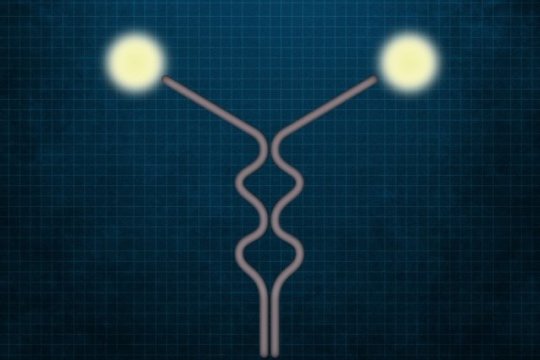In this way they have tried to identify how the proton’s electric charge and magnetization are disturbed. These studies had previously headed scientists to assume that the magnetic and electric charge distributions are the same, and that single photon, an elementary particle of light is exchanged when the protons interact with the bombarding electrons.
But in the early 2000s, the scientist began to carry out studies using polarized electron beams that estimates electron-proton elastic scattering using the spin of the protons and electrons. Such experiments disclosed that the ratio of electric to magnetic charge distributions diminished dramatically with higher energy interactions between the protons and electrons. This headed to the theory that not one but two photons were sometimes being exchanged during the interaction, resulting in the uneven charge distribution. What is more, the theory predicted that both of such particles would be so-called ‘hard’ or high energy photons.
In a bid to recognize this ‘two-photon exchange’, and international group headed by scientists in the Laboratory for Nuclear Science at MIT carried out a seven year study, known as OLYMPUS at the German Electron Synchrotonin Hamburg. The scientists disclose the results of this study, which indicate that two photons are indeed exchanged during proton-electron interactions.

But, unlike the theoretical predictions, analysis of the OLYMPUS measurements suggests that most of the time, only of the photons has high energy, while the other must carry very small energy required, according to Richard Milner, a lecturer of physics and member of the Laboratory for Nuclear Science’s Hadronic Physics Group, who headed the study. “We saw less if no evidence for a hard two-photon exchange,” says Milner.
The scientists had to disassemble the former BLAST spectrometer, an intricate 125 cubic meter sized detector based at MIT and transport it to Germany, where it was reorganized with some enhancements. They then carried out the study over three months in 2012, before the particle accelerator at the lab was itself decommissioned and shut down at the end of that year. The study that was introduced at the same time as two others in the Russia and U.S., involved bombarding the protons with negatively charged electrons and positively charged positions, and comparing the difference between the two interactions.
“We ran the study for three months and produced very accurate measurements,” he says. “You would have to run for years to get the same level of accuracy, unless the performance could be enhanced.” In the immediate future, the scientists plan to witness how the theoretical physics community responds to the data, before deciding on their next step, confirms Hasell. “Then it will be up to the experts to check if that hold to be the case.”
Filed Under: News


Questions related to this article?
👉Ask and discuss on Electro-Tech-Online.com and EDAboard.com forums.
Tell Us What You Think!!
You must be logged in to post a comment.